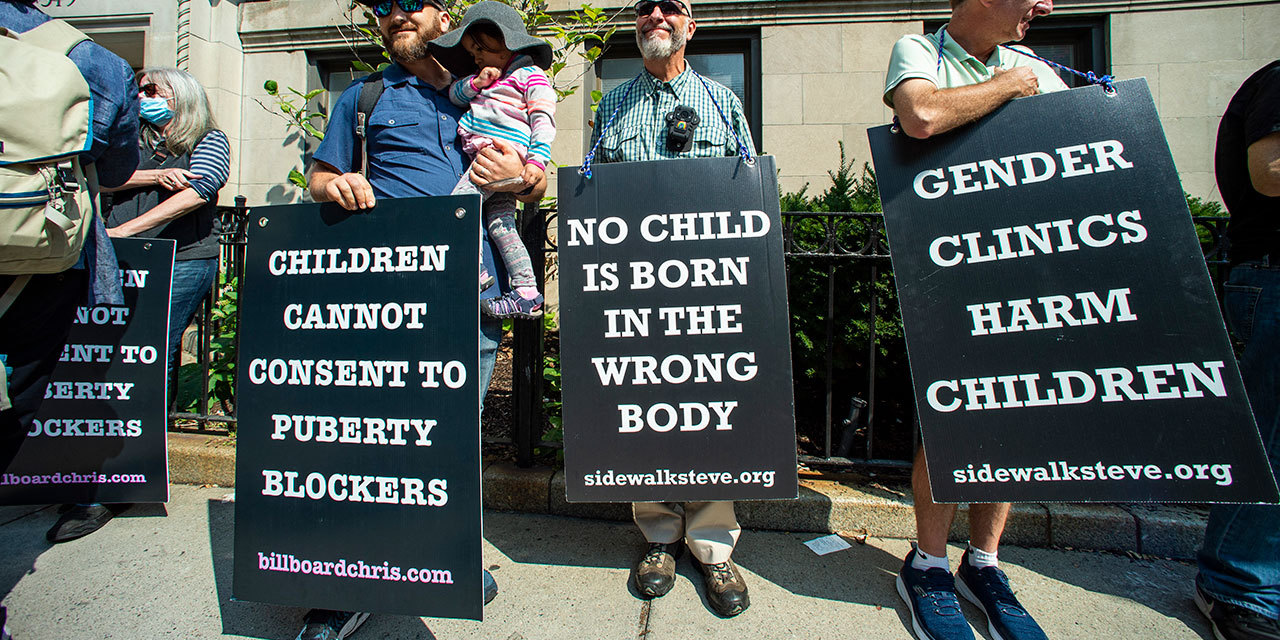Not long ago, liberals had a nervous breakdown over the decline (or so they imagined) of the Internet. Democrats predicted that we were about to “get the internet one word at a time.” A senator warned that we were on “a road to digital serfdom.” “The internet is dying,” declared the New York Times. There were street protests and death threats. The fear was that, unless the Federal Communications Commission imposed so-called net neutrality—a euphemism, in practice, for heavy-handed common-carrier regulation—we would soon have to pay to access individual websites.
Last week, a federal appellate court likely put to rest the argument over FCC-imposed common-carrier rules. It was a quiet death: protesters didn’t mark the occasion, politicians have gone silent, and the media have moved on—for the simple reason that their cause was spurious, both in law and in practice.
The Internet chugged away just fine in a lightly regulated market until 2015, when the FCC issued the Open Internet Order. That directive imposed an onerous common-carrier regime, under which the FCC had the power to control broadband providers’ prices and business models. A few years later, the agency reversed course, deregulating the industry in the Restoring Internet Freedom Order (thereby triggering the progressive panic). Last year, the agency switched position yet again, using a new Open Internet Order to return broadband to utility-like treatment.
The 2015 Open Internet Order declared that broadband was a “telecommunications service” under Title II of the Communications Act of 1934, and thus subject to common-carrier rules. The Restoring Internet Freedom Order pushed back, saying that no, broadband was an “information service” under Title I of the Act, and therefore subject to light-touch regulation. Despite reading the law in incompatible ways and imposing contradictory regulatory schemes, both FCC orders withstood legal challenge. In each instance, the agency received Chevron deference, under which a court defers to any reasonable reading of a statute that an agency can muster.
Last June, however, the Supreme Court overturned Chevron in Loper Bright Enterprises v. Raimondo. “Agencies,” Chief Justice John Roberts concluded, writing for the Court, “have no special competence in resolving statutory ambiguities.” Rather, he explained, it is judges who know best how to “interpret statutes” using “the traditional tools of statutory construction.” Loper Bright returns to the courts the task of “exercis[ing] their independent judgment in deciding whether an agency has acted within its statutory authority.”
So, when the new Open Internet Order arrived in court last fall, the FCC could no longer rely on Chevron deference—and that made all the difference. Forced to give the statute its best reading, a panel of the U.S. Court of Appeals for the Sixth Circuit decided unanimously, on January 2, that broadband is a lightly regulated information service.
Indeed, the question wasn’t that difficult. Congress amended the Communications Act of 1934 in the Telecommunications Act of 1996. The 1996 Act is, first and finally, a deregulatory statute. It aims to “reduce regulation,” the better to “encourage the rapid deployment” of new technology. In keeping with that theme, it states, “The Internet . . . ha[s] flourished . . . with a minimum of government regulation.” It pledges “to preserve” the “free market” for the Internet, “unfettered” by new rules.
Given all this, it is unsurprising that broadband fits the definition of “information service” like a glove. Under the 1996 Act, the Sixth Circuit noted, “an ‘information service’ manipulates data, while a ‘telecommunications service’ does not.” A telephone is the classic example of a “dumb pipe” telecommunications service that transmits raw information (a voice). Broadband, by contrast, enables users to retrieve, store, process, and publish information via email, websites, cloud storage, streaming services, social media, and more. The FCC had no trouble understanding this distinction for many years. In a 1998 report, it declared: “The very core of the Internet and its associated services is the ability to ‘retrieve’ and ‘utilize’ information.” It repeatedly affirmed that broadband was an information service before succumbing to political pressure in 2015.
Why has the Sixth Circuit’s ruling received so little attention? Because the progressive fearmongering was bogus. When the FCC returned broadband to light-touch regulation in 2018, the web did not “die.” There was no “digital serfdom.” On the contrary, deregulation has unleashed broadband investment. The Internet continues to become faster and more reliable. Prices have dropped. Innovation, such as advances in satellite Internet service, carries on unabated.
Will the Left reflect on this episode? Don’t count on it. The self-styled party of science and social justice goes from cause to cause without loss of enthusiasm. But the lesson for the rest of us is clear. When a progressive tells you that fossil fuels are an imminent threat to civilization, that America is fundamentally racist, or that your fifth-grader should consider changing pronouns, bear in mind that these are the same people who said you were about to get the Internet one word at a time.
Photo by Chip Somodevilla/Getty Images




